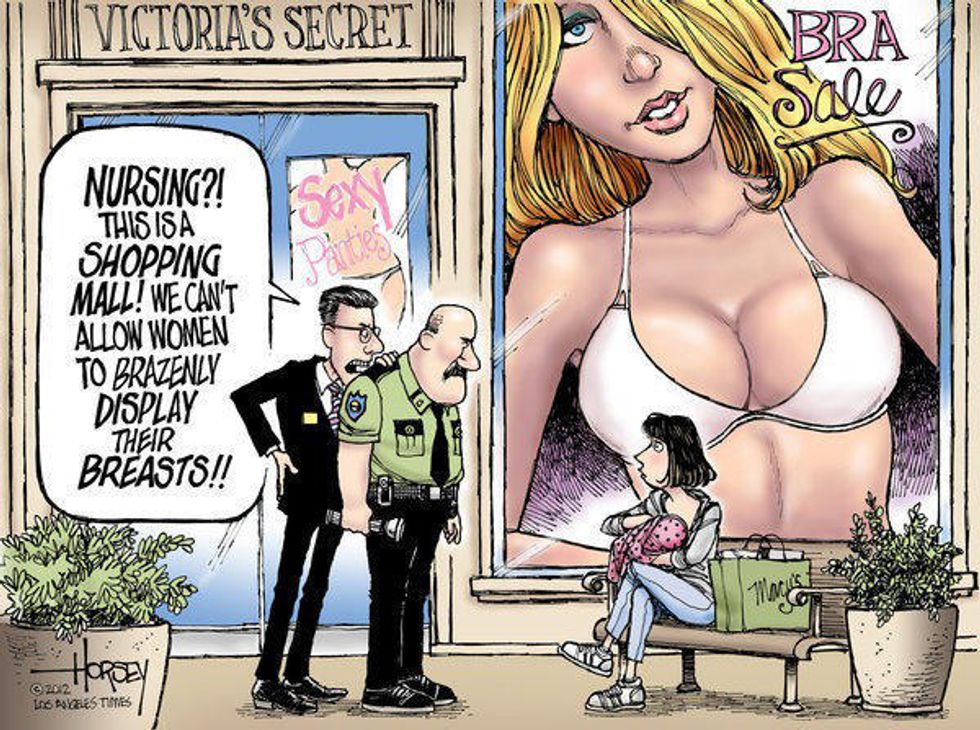Even as we enter into the depths of winter, when chunky sweaters and multiple layers become the fashion standard in the frigid land of New England that I call home, the dispute over what constitutes “appropriate” fashion for pre-teen and teenage girls continues to rage on in schools, as outfits shift from tank tops and short shorts to leggings as pants. The campaign against these garments, spearheaded by a pseudo-militia of concerned parents, teachers, and school administrators, has attacked them as too “revealing” for an academic setting. At this point, if you’ve had any exposure to media within the past five years, you know the main argument put forth by dress code vigilantes. In short, they argue that when adolescent boys are faced with a spaghetti strap or yoga pants, they are no longer able to pay attention or perform in school. Thankfully, the continuance of this archaic ideology has sparked many protests and high-profile rebuttals, and so rather than address this ignorant concept, I will instead examine a different, interesting issue that this debate brings to the forefront.
The existence of the school dress code debate has raised awareness of the cultural acceptance, and in many ways promotion, of the sexualization of young girls and women. We live in a society in which objectification has become the norm, a society in which women are taught from a young age to view their bodies not as their own, but as the object of male desire. The female body is constantly analyzed and put on display, and often treated in painfully contradicting ways. One need only look at this LA Times cartoon by David Horsey to see just how divergent society's standards are:
As illustrated by this cartoon, there exists an astounding hypocrisy in our culture, one in which women are expected to have their bodies on demand for sexualized display, while simultaneously covering them up at any point their exposure is no longer sexually gratifying to men. Women who do in any way reveal themselves beyond the limits of Vatican-sanctioned garb are viewed as having no sense of self-worth, thereby making covering up synonymous with valuing one's physical self. And yet, with a hyper-sexualized market where bikinis for six-month-olds are available at Target, it’s virtually impossible to find any shorts or tank tops in the junior's section that comply with covering-up standards. Despite the Victorian Era ending nearly 120 years ago, our modern society continues to operate under its obtuse gender ideals, shaming girls and women for exposure without offering any alternatives.
Continual societal shaming of young women for having confidence in themselves and their bodies, as well as the restriction of their bodily autonomy based on the erroneous needs of men, is more than just reminiscent of a far less enlightened time - it's the continuance of an age-old patriarchy that oppresses women by removing their fundamental right to physical independence. Supporters of strict dress codes often refer to the girls attempting to stay cool in a tank top or comfortable in leggings as lacking self-respect. But in reality, by making the personal choice to wear what they want when they want, young girls use self-determination to show that they value themselves and their bodies. In the organization of protests and the fight against frankly misogynistic restrictions, these young girls demonstrate that they do in fact respect themselves and their bodies, while simultaneously revealing that the ones with no respect for young girls and women's bodies are the people policing them.









 The minimum wage is not a living wage.
StableDiffusion
The minimum wage is not a living wage.
StableDiffusion
 influential nations
StableDiffusion
influential nations
StableDiffusion












